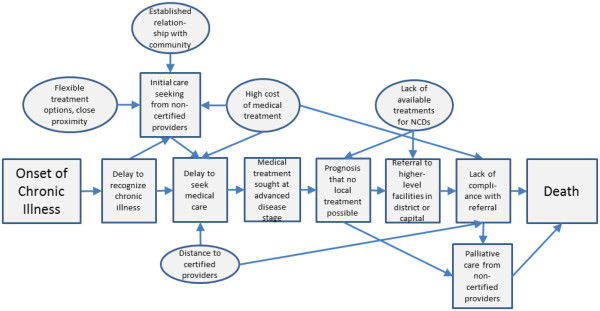Figure 2.
Conceptual model of pathways to mortality for non-communicable disease deaths (n = 250). This figure presents an overall conceptual model of common factors associated with NCD deaths. The square shapes denote actions taken by women and their families on the pathway from the onset of chronic illness to death. Circles represent factors contributing to these actions, as identified through analysis of verbal autopsy narratives. A failure to recognize the chronic nature of illness was a common theme that contributed to convoluted treatment seeking pathways. Families first sought care from non-certified providers due to flexible payment options, proximity of non-certified care providers, and established relationships with non-certified providers. Since non-certified providers usually failed to treat chronic conditions successfully, most women sought treatment from medically certified providers at advanced stages of disease. Doctors typically said that the disease had progressed to such an advanced stage that treatment could not be provided locally. Instead, they usually referred patients to higher-level facilities in district hospitals or the capital city.

